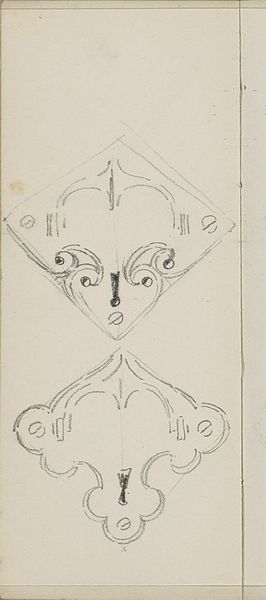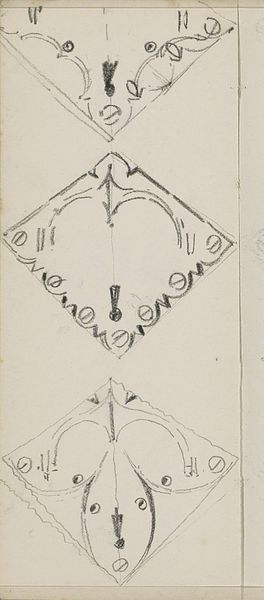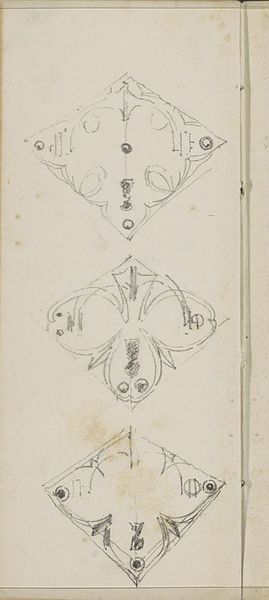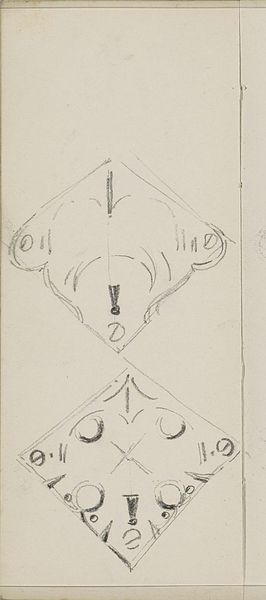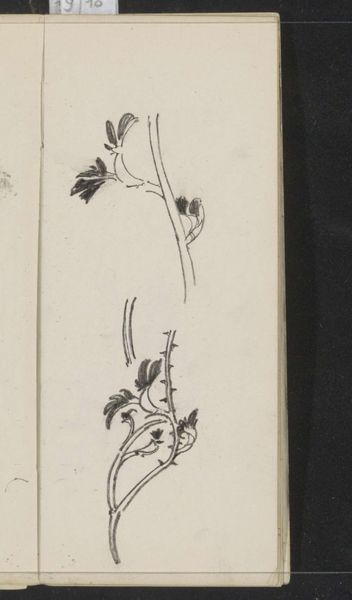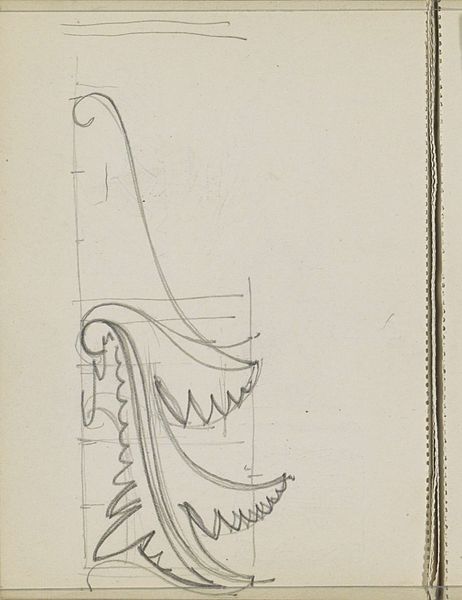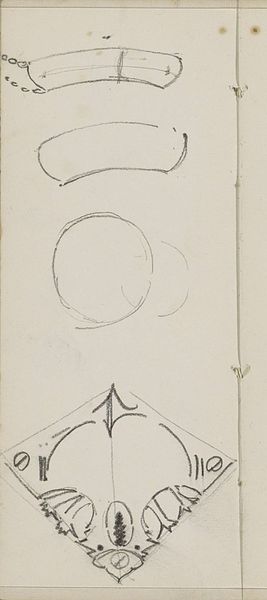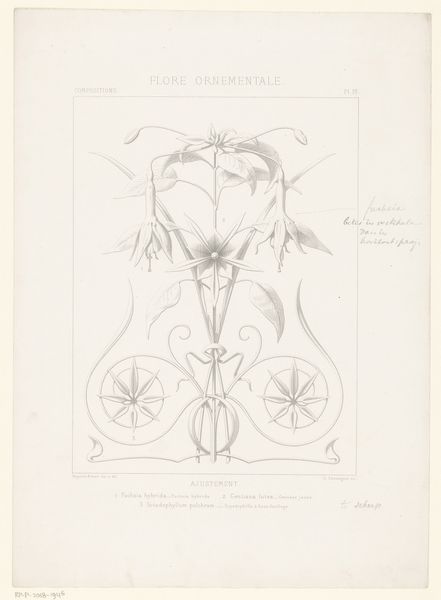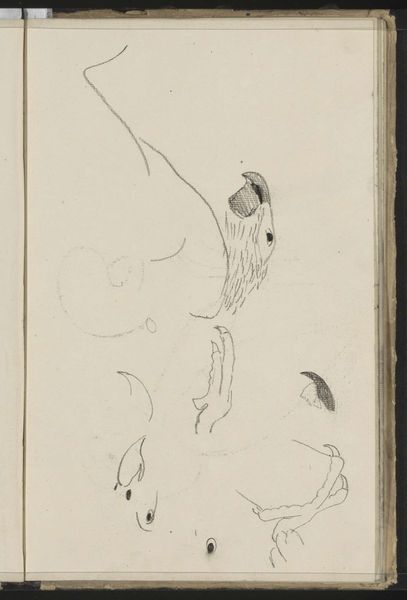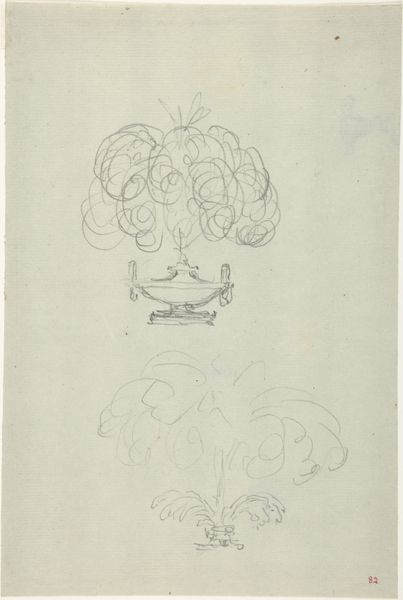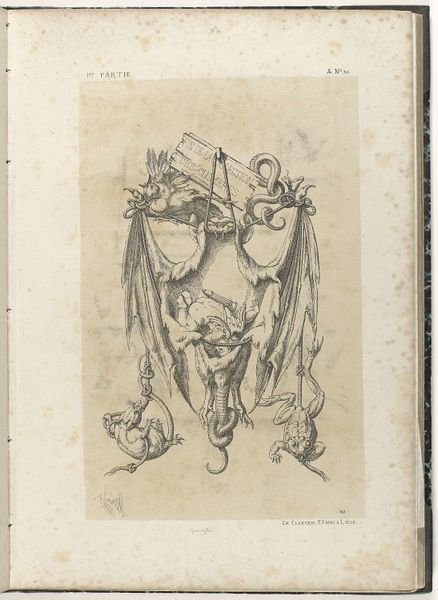
drawing, pencil
#
drawing
#
amateur sketch
#
light pencil work
#
art-nouveau
#
quirky sketch
#
personal sketchbook
#
idea generation sketch
#
sketchwork
#
geometric
#
pencil
#
sketchbook drawing
#
storyboard and sketchbook work
#
sketchbook art
#
initial sketch
Copyright: Rijks Museum: Open Domain
Curator: Looking at this unassuming pencil sketch, what catches your eye? Editor: The symmetry, definitely. There’s something almost heraldic about the paired forms, even in this embryonic state. They seem caught between abstraction and… something recognizable. Curator: Indeed. This piece, titled "Ruitvormige ornamenten"—meaning Rhomboid Ornaments—comes to us from the hand of Gerrit Willem Dijsselhof, dating sometime between 1876 and 1924. He was clearly working out a design. I'm seeing motifs reminiscent of Art Nouveau creeping in. Editor: Ah, yes, the period influence makes perfect sense. So, this is housed in the Rijksmuseum collection, making it part of a specific cultural heritage. I’m wondering, in what context were such designs usually deployed? What's the politics embedded in decorative sketches of this sort? Curator: Dijsselhof, rooted in the Symbolist movement, often imbued his art with layers of meaning, seeing forms as echoes of deeper realities. Here, the rhomboid—a lozenge or diamond shape—historically symbolized feminine power and fertility in some cultures, though in other eras, and perhaps tellingly so, they have also symbolized deception, secrecy, or illusion. He's actively engaged with visual symbol languages that echo far back in time. Editor: That’s fascinating. Could these ornaments then be intended for architectural use? Or maybe as elements within a larger decorative scheme for the elite? The repetitive nature of these designs points towards some production motive that speaks directly to societal tastes of the time. It’s not purely a private, solitary investigation. Curator: He may very well have conceived of them within a larger schema, certainly. But to my eye, I'd guess that these ornaments may also exist as stand-alone elements, reflecting themes central to Dijsselhof's beliefs – unity, interconnectedness, and perhaps an exploration into hidden realms within our visible reality. Editor: The simplicity allows the viewer to project quite a bit. Its accessibility has made me see sketchbooks and early concept art as a crucial entry point into understanding the intent and social implications of art. A sketch reveals the artist, before the market forces or the commissioner's desires come into play. Curator: Well, for me, glimpsing these initial, fragile marks opens the gates to a potent dialogue spanning from his creative source to the present day. Editor: An invitation, perhaps, into the very workshops of dreams.
Comments
No comments
Be the first to comment and join the conversation on the ultimate creative platform.
